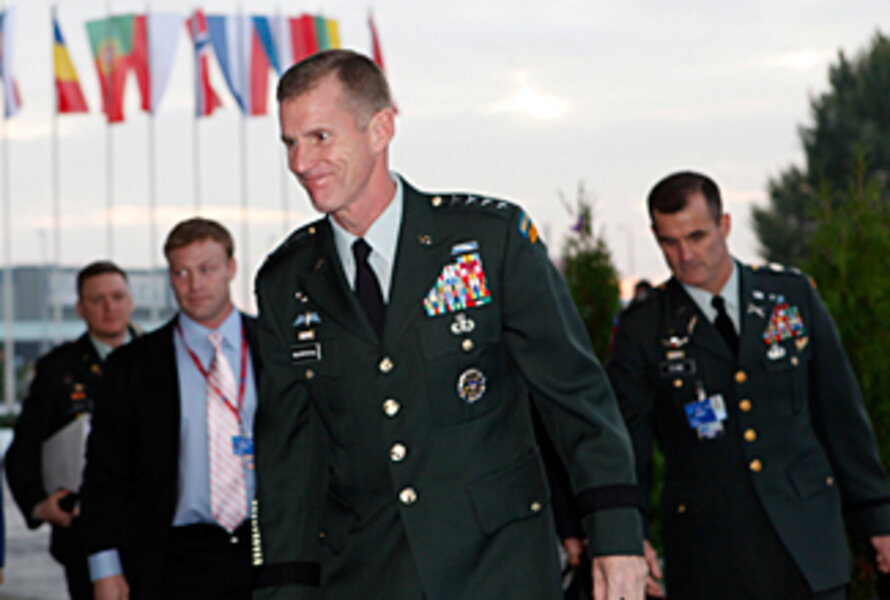NATO backs McChrystal's Afghanistan strategy
Loading...
| Bratislava, Slovakia
NATO defense ministers Friday gave "broad support" to the counterinsurgency strategy proposed by Gen. Stanley McChrystal, the top US commander in Afghanistan, but sidestepped the difficult question of how many forces would be required to implement that plan.
The top UN special envoy for Afghanistan also backed McChrystal's strategy at the NATO meeting.
"We have come to a point where I believe McChrystal is right," said Kai Eide here Friday, adding bluntly, "If we continue the way we've done so far, both with regard to the military effort, the civilian effort, and the behavior of the Afghan government, this project will not work."
Taken together, the comments suggest that American allies are leaning toward a more troop-intensive, counterinsurgency approach that opens the political door for President Obama to direct deployments of tens of thousands of additional troops.
The Obama administration is deliberating over what strategy to pursue in Afghanistan – a counterinsurgency approach that focuses on securing the country and winning over the population and that would require many more troops, or a more targeted approach that focuses on taking out Al Qaeda leaders with air strikes.
While signaling support for more troops, NATO minsters did not address the tougher issue of how many more troops to send and stopped short of making additional resource commitments themselves.
"The purpose of today's meeting was not to make any decision on figures," said NATO Secretary General Anders Fogh Rasmussen during a press event here. "I have noted broad support of all ministers … but without discussing resource implications."
About 40,000 NATO and non-NATO troops are currently in Afghanistan, in addition to about 68,000 US forces.
McChrystal flew to the meeting from Afghanistan to make a 15-minute pitch to 40 NATO and non-NATO ministers. During his remarks, he discussed the number of troops he believes are needed to conduct a proper counterinsurgency, but received no feedback from any of the defense ministers, according to a senior defense official who listened in on the meeting.
McChrystal is thought to be asking for as many as 80,000 additional troops for Afghanistan, but a number of about half that seems more likely to be considered.
The White House's decision on Afghanistan may be as many as three weeks away, according to Defense Secretary Robert Gates, who has been reticent to speak about his own thinking on the way ahead in Afghanistan.
Despite its contributions in Afghanistan, the NATO alliance has been criticized by the US over the years for not doing enough. For years, American officials have pressured individual countries to send more troops and other resources to Afghanistan, or to loosen caveats that restrict some militaries, like that of Germany's, from conducting certain kinds of operations.
The US decision on whether to send many more troops is critical. It could sway allied nations that struggle politically with the unpopularity of the war to send more forces or at least to provide more financial resources for the war.
---
Follow us on Twitter.





